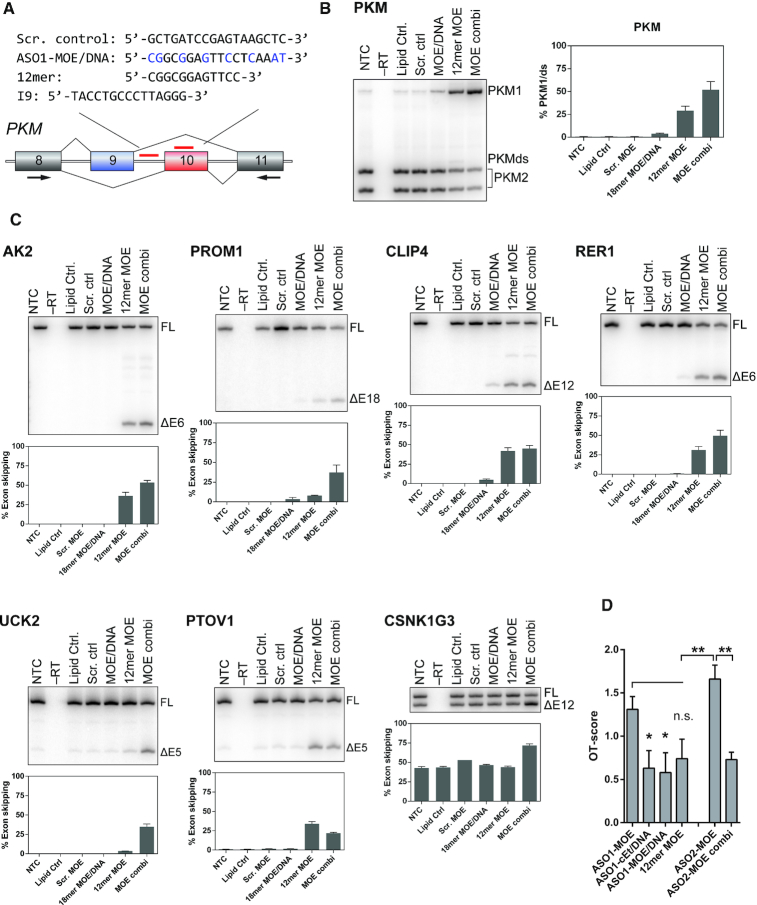Figure 5.
Alternative strategies to reduce off-target effects in vitro. (A) ASOs used in this figure include a short 12mer ASO that overlaps both ASO1 and ASO2, another PKM splice-switching ASO that targets intron 9 (I9), and a scrambled-sequence control ASO. (B) The effect of alternative ASOs on PKM splice-switching. The on-target activity of MOE/DNA ASO is worse than the uniformly MOE-modified ASO1 (3.5% and 29.9% PKM1, respectively; see Figure 2). Both the 12mer MOE (45.5% PKM1) and the combination treatment (52.3% PKM1) performed better than either ASO1 or ASO2 alone. Individual ASOs were transfected at a final concentration of 30 nM. For the combination treatment, ASOs were transfected together, at a final concentration of 15 nM each. (C) Radioactive RT-PCR results of seven validated off-targets. Bar charts show mean ± SE from three independent experiments. (D) Average OT-scores for each ASO tested, for 7 different off-targets (AK2, PROM1, RER1, CLIP4, UCK2, PTOV1, CSNK1G3), compared to the ASO1 and ASO2 results. OT-scores for ASO1-MOE and ASO1-cEt/DNA serve as a point of comparison, and are the same as in Figure 2. Individual OT-scores for each off-target are listed in Table 2. The OT-score takes variable on-target activity into consideration, and thus it can be used to directly compare the off-target activity of different ASOs. * P < 0.05; ** P < 0.01;

